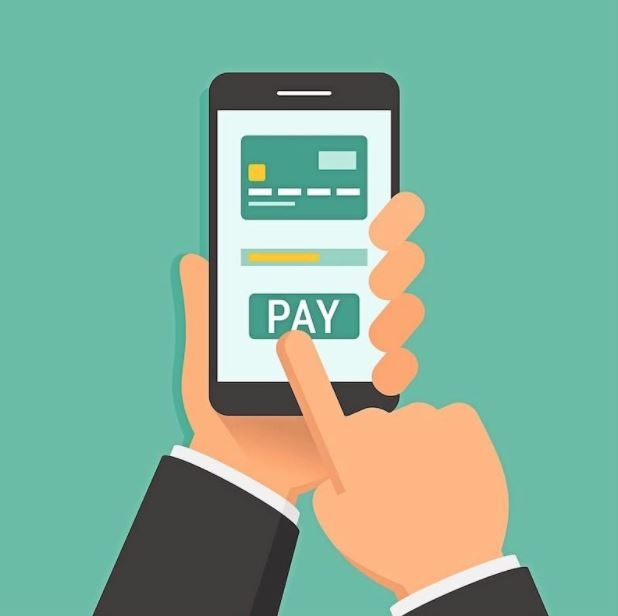Information It's Important To Learn About The Grow Of Online Payment Gateways

The cashless payment system is growing exponentially with evolving payment methods, rising e-commerce use, enhanced broadband connectivity, and emergence of new technologies. Can increasing incidences of cyberattacks and spams hamper the increase of internet payment market or does it expanding in a rapid rate?

The global digital payment industry is anticipated to hit the USD6.6 trillion mark in 2021, registering around a 40% jump in two years. The cashless payment methods are rapidly evolving with ground-breaking innovations such as mobile wallets, peer-to-peer (P2P) mobile payments, real-time payments, and cryptocurrencies. In the growing digital age, many payment technology information mill collaborating with traditional banking institutions to appeal to the latest consumer and merchant preferences. Because of enhanced broadband connectivity, increasing mobile commerce, emergence of the latest technologies for example Virtual Reality, Artificial Intelligence, and rapid digitization, immeasureable folks have started embracing contactless payments in both developed and emerging countries. Besides, surging e-commerce businesses, digital remittances, digital business payments, and mobile B2B payments are boosting the non-cash transaction ecosystem.
Cashless transaction method users across various generations are widely following a digital peer-to-peer (P2P) apps as they are more inviting and versatile to make use of. In-app payments or tap-and-go transactions take seconds in the checkout and invite users to create payments anytime and anywhere. Tokenization, encryption, Secure Sockets Layer (SSL), etc., offer multiple ways of securing payments while enabling digital transactions. Moreover, you don't need to complete information each time to finish the payment process. Thus, online payment gateways play a vital role inside the economic growth, enabling exchange present day economy. With social distancing rules available, digital payments have grown to be a duty for contactless transactions rather than a transaction option to avoid the spread of coronavirus.
Digital Commerce Empowering Businesses
Electronic payment systems are becoming a crucial part of businesses as consumer the likelihood of online shopping is expanding. With broadening internet penetration, increasing using smartphones, and diverse alternatives for e-transactions, most individuals are preferring online channels over traditional brick-and-mortar stores for shopping. Therefore, corporations are shifting online by having an electronic payment solution to maximize their profit earnings. Automating the electronic payment system eliminates the scope of errors and saves a great deal of effort and time. High standards for detecting and preventing fraud in digital transaction systems and AI-based fraud detections protect users from security breaches. By giving the flexibility in making payments through credit/debit cards, mobile money, e-Wallet, etc., nokia's can expand their customer base. The electronic payment process improves client satisfaction as customers need not count cash or cope with paperwork if he or she desire to make the transaction.
Biometric Authentication Enhancing Security
Biometric authentication involves recognizing biometric features and structural characteristics to verify the identification of the individual. The verification method can involve fingerprint scanning, facial recognition, voice recognition, vein mapping, iris detection, and heartbeat analysis. Together with the rise in identity theft and fraud, biometric authentication has changed into a reliable and secure alternative in making digital transactions. As outlined by a recently available research, biometrically verified mobile commerce transactions are anticipated to constitute an enormous 57% from the total biometric transaction by 2023. Biometric payment cards can also be becoming popular since they support tap-and-go payments, allowing users to create faster digital transactions. The digital payment technology provider, Worldline is joining up with the French FinTech, A3BC (Anything Anywhere Anytime Biometric Connection), to safeguard cell phones from intrusion having a two-factor authentication process. The combined solution eliminates identification via a single touch, rather it recognizes fingerprints through a picture with the hand. MasterCard is intending to bring FinGo's vein-scanning payment solution that facilitates users to authenticate transactions.
Dominance of Mobile Wallets
In 2019, mobile wallets overtook bank cards to become the highly adopted payment type globally. Digital wallets offer flexibility to users to store multiple payment methods in a digital home and turn cash into electronic money required for online or in-store purchases. Banking institutions have already began to embrace the digital wallet trend by providing virtual cards to business customers. The virtual cards saved in digital wallets consist of details like 16-digit card number, CVV code, date of expiry and work similar to the physical charge card. Currently, only 37% of merchants support mobile payments in the point of sale, though the rising adoption, merchants are able to spend money on technologies facilitating digital wallets. The virtual wallets can help to conserve money due to low processing costs since they limit transaction values and frequency. Artificial Intelligence (AI) is increasing the consumer experience with regards to transactions with ChatBots, designed to execute and robotize essential exchanges as reported by the user's interest. Besides, cryptographic money-based e-wallets are increasingly being embraced by new companies to small-medium organizations for storing digital money. Smart voice technology is contributing to the increase of smart voice wallets ever since Amazon propelled the key with this platform, which is now being as well as Google and Apple.
E-Commerce Boom Accelerating Digital Payment Market Growth
E-commerce growth within an exponential rate is creating shock waves, and the sonic boom is reverberating through the FinTech sector. The development of countless e-commerce companies is driven through the kind of financial services they offer. Digital transactions allow it to be convenient for that buyer and seller to generate transactions and remain faithful to the market space. The COVID-19 pandemic added another dimension to e-commerce innovation, introducing newer trends for example payment alternatives at checkouts (not with digital wallets), virtual cards, QR codes, as well as other touchless transactions. Besides, the Buy Now Pay Later (BNPL) trend is dominating the e-commerce industry because it relieves the financial burden on the buyer. BNPL involves a soft credit check, hence the consumers can buy what they need, keep your inventory moving, and pay overtime without having affected their credit history. BNPL provides businesses with much-needed liquidity and greater flexibility in the checkout.
Influence of COVID-19 Pandemic on Digital Payment Market Growth
Digital payment systems have moved beyond their peer-to-peer (P2P) transfers and bill payments. The COVID-19 pandemic allowed digital payment systems to showcase their strengths, for instance a strong understanding of hyper-local markets and its ability to establish strong local partnerships. Businesses and consumers increasingly "went digital" for providing and acquiring goods and services online. When the pandemic hit, people would not need to touch or exchange cash due to paranoia of catching chlamydia from physical currencies. Several governments all over the world introduced digital financial gets in provide COVID-assistance. Due to lockdown measures, consumers shifted to online platforms, which catapulted the need for digital payment systems. Now, digital platforms are getting to be a vital part of people's lives, and individuals are very likely to continue shopping online in the post-pandemic period. The dramatic change in consumer behavior probably will augment the need for e-payment systems even more. Therefore, information mill focusing their attention on digital mediums in order to meet the brand new customer demands and thrive businesses within the changing market scenario. Organizations are reimagining customer journeys to reduce friction and provide new safety measures. Payment companies for example PayPal and Square Cash are staffing up across the board to improve see the rearrangement of societal norms and stabilize the business soon.
e-Payment Systems include the Future
With increasing smartphone and internet penetration, rrndividuals are becoming tech-savvy, which presents endless opportunities for the digital payment markets. Post-pandemic, digital payment systems are expected to carry on and flourish through the years in the future. While cards remain the first choice for payments around the globe, mobile wallets are quickly gaining traction. The traditional cashflow is declining in bank branches and ATMs, demonstrating an energy move perfectly into a cashless society. Currently, China dominates the world mobile wallet consumption, then The philipines. However, you can still find many countries that are highly influenced by cash because of lack of trust towards banking institutions and insufficient proper broadband infrastructure, etc. In the near future, social media-initiated payments, biometric payments, voice-activated payments will likely become mainstream in developing countries also.
Cybersecurity and Privacy Concerns with web Payment Solutions
Cybersecurity and privacy threats have grown to be a troubling concern with the growing incidences of internet fraud. In line with the Mastercard survey, one inch four consumers experienced some form of fraud in 2020, ramping up the cybercrime rate by 49%. Within the first half of 2020, online scams increased by 73.8% from 2019. However, adopting new-age technologies including multifactor authentication, biometrics, 3D security, Artificial Intelligence, and Machine Learning will help control fraudulent activities such as phishing, virus attacks, etc. Shifting to contactless cards, QR codes, and tokenization will also help mitigate risks connected with digital payment solutions. Besides, sensitizing end-users in regards to the secure use of e-payment solutions through amplifying efforts towards building financial literacy can help prevent frauds. The emergence of mobile commerce and the evolution of e-payment platforms supported by robust security solutions will help drive the aim of making the economy truly cash-less.
According to TechSci research directory "Global Payment Gateway Market By Type (Hosted, Self-hosted & Bank Integrated), By Enterprise Size (SME and huge Enterprise), By End-User (Retail, Travel & Hospitality, Healthcare, Education, Government, Utilities & Others), By Region, Competition, Forecast & Opportunities, 2026", the worldwide payment gateway companies are supposed to cross USD15 billion mark in 2019, registering a CAGR of 22% by 2026. The increase may be attributed to the growing need for online transactions, rising broadband connectivity, and exponential expansion of e-commerce around the globe.
For more details about peer to peer payment transfer just go to this web portal
